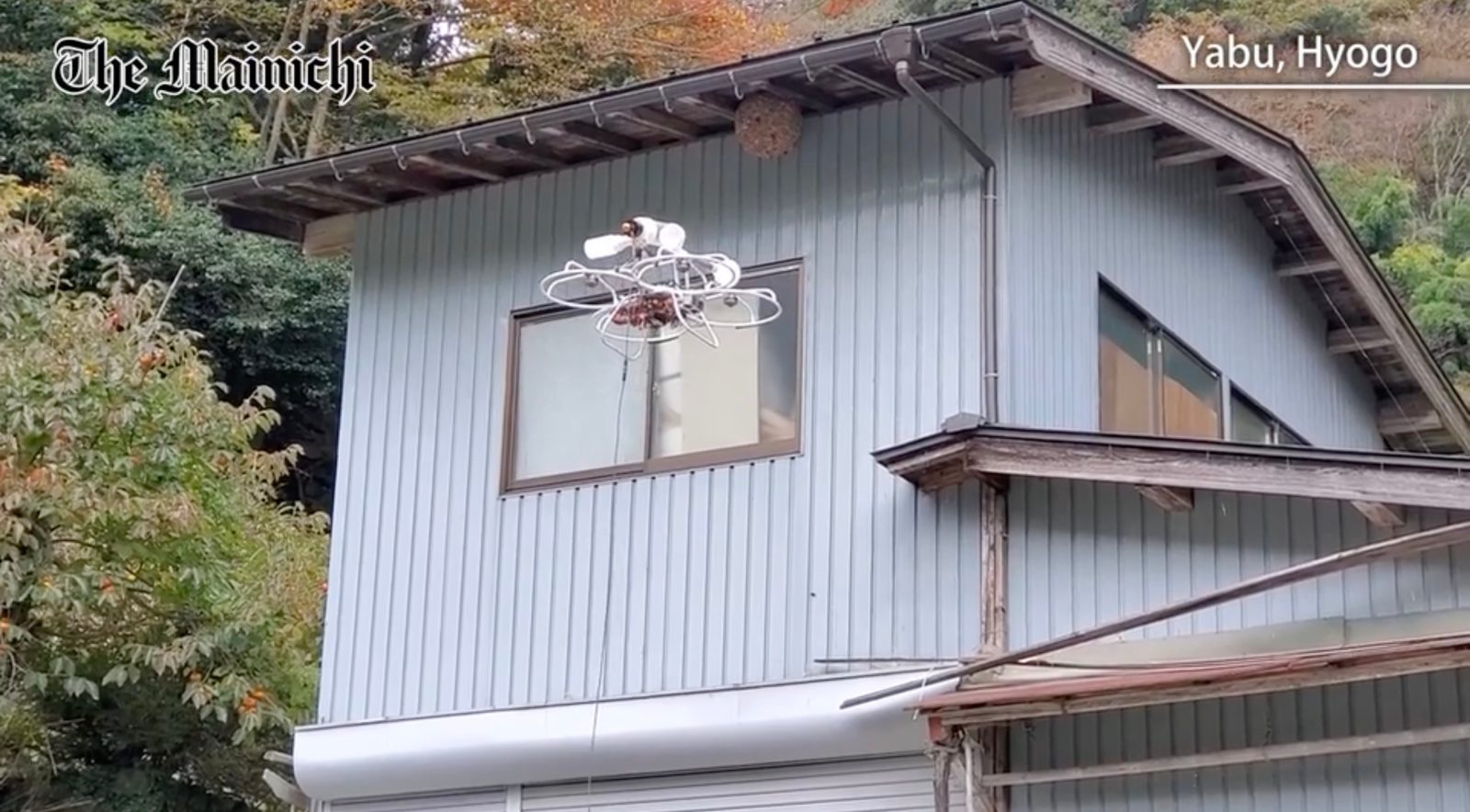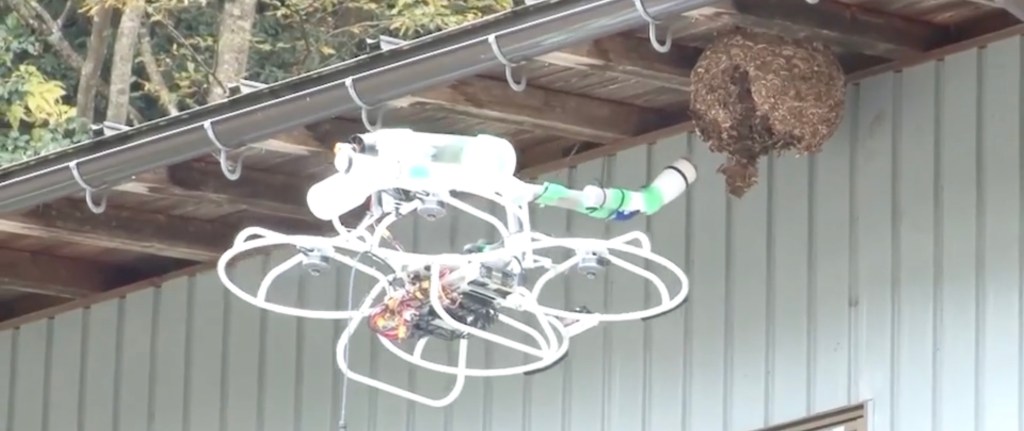
A large Japanese cleaning company has adapted its use of vacuum technology – as well as drones – to develop an efficient tool for the dangerous and occasionally deadly work of breaking up wasp nests.
According to a recent report in Japanese daily The Mainichi cleaning equipment rental giant Duskin Co. adapted a vacuum-equipped drone for the purpose of destroying the large wasp nests that regularly appear on structures in its Hygo Prefecture, about 100 km. west of Kyoto. The company made a video of the UAV’s demonstration flight in November available to the newspaper. In it, a protectively attired pilot is seen sitting comfortably nearby as the craft uses a trumpet-like device to quickly suck up the infuriated wasps that humans usually must eliminate manually – at considerable risk to severe stinging.
The Duskin video shows only 39 seconds of an aerial operation that took nearly two hours. It features the 80-centimeter-wide drone being piloted to break up a 35-centimeter wasp nest hanging from the eaves of a warehouse in a mountainous part of Hygo Prefecture. About 100 of the insects were sucked up by the vacuum, including one thought to be the queen.

The marriage of Hoover and drone to take on wasp nests is no trifling development for Hygo Prefecture – or the poor souls usually tasked with confronting the formidable insects.
According to pest control experts in Japan, Hygo led the country in wasp eradication operations between 2016 and 2020 with 4,245 – nearly a fifth of the nation’s total. On average, between 10 and 20 people are killed in Japan each year from wasp stings, often when trying to eliminate nests.
Duskin itself has had to turn down such jobs when wasp colonies became too large – and dangerous – to bust up, or when nests are located too high off the ground. To work around those perils, the company adapted the vacuum-equipped robotics it had developed for battling cockroaches to drones.
Due to the way the insects respond to threats, meanwhile, the UAV approach actually becomes more efficient as the mission advances.
“When wasps recognize an enemy, they secrete an alarm pheromone and attack in groups,” Yusuke Saito, Duskin’s drone development manager, told The Mainichi. “By attaching pheromones to the drone, they will gather at the machine and can be exterminated efficiently.”
Use of the tech not only spares humans the dangerous risks in work, but also avoids other options like spraying poison, which involve their own human and environmental hazards. Moreover, the evolving nature of wasp nesting activity in Japan will make drone eradication methods even more useful as time goes by.
“The number of foreign species of wasps, which nest in higher places, is spreading in Japan,” Saito says. “The use of drones will become more important in the future.”
FTC: We use income earning auto affiliate links. More.



Comments